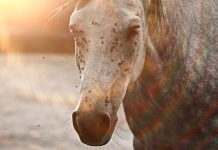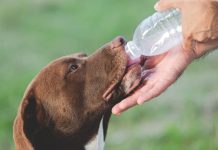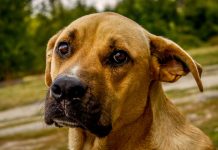- Breed name: Alaskan Malamute
- Country of origin: USA
- Weight: males 36-43 kg, females 32-38 kg
- Height (height at the withers): males 63.5 cm, females 58.5 cm
- Life Expectancy: 13-16 Years
Basic Moments
- Alaskan Malamutes are difficult to train and train due to their natural intelligence and independent disposition. Inexperienced dog lovers will find it difficult to cope with them.
- Representatives of this breed like to dominate in everything, therefore, both the owners and the rest of the family need not only be ready for leadership over them but also be able to hold the “reins of government” in their hands.
- Malamute is a born digger. If you settle this native of Alaska in your yard, be prepared for the fact that trees, shrubs, and a vegetable garden may suffer from his “digging” activities. He can easily make a hole under the fence and escape into the street.
- Proper training is the key to the peaceful coexistence of the dog and the owner. To prevent a large and energetic Malamute from getting bored, he needs to be loaded with work – transporting goods. Otherwise, a stormy temperament will turn into trouble – it will begin to destroy everything in the house.
- Alaskan Malamutes get along well with other dogs and even cats, but subject to proper socialization. However, on the street, even the most educated representatives of this breed forget about all the “rules of decency” and start chasing neighbors’ cats and other small animals.
- Due to their thick coat, they cannot live in regions with hot climates.
- Malamutes can’t bark. There are exceptions to this rule, but very rarely.
Characteristic
The Alaskan Malamute is in demand in northern latitudes as a sled dog for transporting heavy loads. This ancient breed is distinguished by its large size, ability to work, and strong character, combined with friendliness and sociability. While walking, malamutes attract admiring glances from others, but people often confuse them with Siberian huskies. The main qualities of the Alaskan Malamute are the extraordinary strength of the limb and the enormous pulling ability, but it must be admitted that he is so dearly loved by everyone because of his pretty fluffy!
History of the Breed
The Alaskan Malamute is the oldest breed in North America. At the same time, it is considered one of the oldest on the planet. It is possible that the Alaskan Malamute, in comparison with other dogs, lives the longest near a person. This theory is supported by archaeological finds, which confirm that malamutes have practically not changed genetically since ancient times. In 2004, experts analyzed their DNA and concluded that it has a great genetic similarity to a wolf. It can be argued with a high probability that the ancestors of modern malamutes are domesticated wolves. The latter were immigrants from Central and East Asia, having got to North America through the Bering Strait together with their nomadic masters. It happened about 14 thousand years ago.
Interesting results were obtained as a result of the analysis and comparison of the DNA of the Alaskan Malamute, Alaskan Klee-kai, and Siberian huskies. It turned out that they are related not only to the wolf but also to each other. Differences were found only in size and weight. Alaskan Malamutes are larger than their counterparts, they have heavy bones and a powerful physique. Weight ranges from 34-39 kg, while, for example, Siberian huskies weigh 20-27 kg.
Alaskan malamutes did not become riders at once. Eskimo tribes in those distant times led a nomadic way of life, moving through the territory with severe weather conditions in search of food. The dogs were full-fledged members of the tribe, performing watch functions and helping men on the hunt. It was the cold climate of Alaska, coupled with the limited food resources, that played a fundamental role in the development of this breed. Weak individuals who found it difficult to survive simply fell out of the genetic chain as unnecessary links. The strongest and fittest survived. The breed developed over the centuries in the Anvik River basin, where representatives of the Eskimo tribe Malemut settled from Siberia to Alaska.
The Eskimos developed the Malamutes according to their simple standards, which had nothing to do with beauty. The main thing is that the dog is a faithful helper – strong, capable of hunting, pulling sleds, and adapted to bitter frosts. Natural selection work yielded results, and the Alaskan Malamute became what we know it today.
The breed also gained popularity among Europeans. This happened towards the end of the 19th century, although their acquaintance with it began at the time of the conquest of Siberia. Why then and not earlier, you ask? The fact is that in 1896 the gold rush began on the Klondike, and crowds of people who wanted to enrich themselves flooded there. They were interested in getting around quickly. And since in the conditions of the North this is not an easy task, so malamutes came in handy. The popularity of this breed of dogs caused a rise in prices for them. For one individual they asked for $ 500, and for a whole team – one and a half thousand. In modern terms, this is 13 thousand and 40 thousand dollars. This is how Malamutes became the most demanded and most expensive dogs in the northern latitudes.
Gold miners brought with them representatives of other breeds, for example, Newfoundlands and St. Bernards. By crossing them with malamutes, the prospectors hoped to get stronger and more resilient dogs. However, like sleds, such mestizos did not meet expectations. Instead of dragging the sleds, they snapped and fought with each other more. At the same time, the sport of dog sled racing was popularized. The All Alaska Sweepstakes, a 408-mile race in 1908, made history. Dogs were collected from all over Alaska for participation since the victory in it meant not only fame and prestige, but also money.
The indisputable quality of the Alaskan Malamutes is endurance. Only in terms of adaptation to the climate, ability to work in a team, and speed qualities, this breed lost to dogs of other species. The owners hoped to improve these indicators in her by crossing with representatives of small breeds. Such efforts have put purebred dogs on the brink of extinction. The situation worsened especially in 1920 when the number of the latter dropped to a critical level. To keep the breed from extinction, a small group of enthusiastic breeders joined forces and revived it.
Over the next two decades, the breed was divided into three lines – M’Lut, Kotzebue, and Hinvan-Irwin. Their representatives are the ancestors of modern malamutes, retaining the features of one line or another. But the white streak in the development of the breed did not last long – the Second World War began. The four-legged representatives of Alaska took part in it and suffered huge losses. By 1947, the number of malamutes had reached a critical level: only 30 registered individuals remained. In order to preserve the breed, breeders had to make some sacrifices, namely, to move away from line standards. In the XXI century, the Alaskan Malamute not only survived but continues to be one of the most popular dog breeds. Its history began simply as a sled dog, and today it is the official symbol of the largest and most northern American state – Alaska. However, this status does not prevent these very hardy and hardy dogs from fulfilling their traditional role – to transport heavy loads.
Features
Alaskan Malamute is a large, beautiful, and strong dog that looks like a wolf. The spectacular appearance, which invariably attracts attention, is complemented by irrepressible energy, which can only be mastered by experienced lovers of this breed, who are sensitive to the psychology of their pets. These northern giants treat people good-naturedly but strive to dominate them. In everyday life, such a character trait is not considered positive, but in extreme situations, this is a big plus. There are cases when, thanks to the ability to make independent decisions, the dog saved the life of its owners.
Appearance and Special Features of the Breed
The main “mission” of the northern handsome man is the same as that of the husky – to carry loaded sleds through the snow. The Malamute has a lot in common with the husky: both dogs have a wayward character, many even confuse these breeds. But the differences between them are not so difficult to find. Malamute is taller, it has more weight, and the bone is wider than that of the husky. All these qualities make the Alaskan handsome man much more resilient than his closest brother: he can run with a heavy harness even for a whole day. In representatives of these breeds, wool is also different, in Malamutes it is longer and thicker. But the color is almost identical.
The Alaskan Malamute, one of the top 30 most popular breeds in North America, belongs to the Spitz group. It is a robustly built dog with a muscular body, densely covered with thick hair. The breed also has a large head and deep chest. The height at the withers and weight in males and bitches are different: 63.5 and 58.5 centimeters and 38 and 34 kg, respectively. Looking at the puppies, it’s hard to believe that huge and energetic dogs grow out of them. Malamutes in childhood are plush bumps that cause affection.
The depth of the chest of a northern heavyweight is half its height at the withers, but its lowest point is located behind the forelegs. If you measure the body from the shoulder-blade joints to the ischial tuberosities, it turns out that its length is greater than the height at the withers. The power and temperament of adult males will amaze even the most sophisticated dog lovers. It will surprise you, but malamutes can be kept in a city apartment. But so that he does not behave in a home-like an elephant in a china shop, teach him various commands and do not let us dominate. The enormous stubbornness and willfulness of these dogs must and can be fought. With a positive result of your efforts, you will get a loyal friend for many years.
Despite their impressive appearance and some flaws in character, Alaskan Malamutes are sincerely attached to their owners, love them, and show devotion. They are friendly, playful, and kind. The movements of this breed are smooth, fast, and balanced. The thrust that the hind limbs give is transmitted, like electricity through wires, to the forelimbs through the developed lower back. When viewed from the side, the moment of the push is very visible. The forelegs, in turn, take a wide and smooth stride. Legs moving along the line – this is clearly visible when viewed from both the front and rear – do not step too wide, but not too narrow. As the stride accelerates, the feet move closer to the centerline. Experts recommend: if your pet steps or generally moves in such a way that it interferes with productivity and economy, punish him in order to avoid repeating such mistakes in the future.
Character
Dogs of this breed can not be classified as lazy and slothful. They are perfectly motivated to work, have irrepressible energy, requiring almost constant attention.
Some owners initially expect that after a walk in the fresh air, the dog will get tired and want to sleep. But no. Returning home, he begins to rush around the apartment, “fight” with furniture, and spoil things. Living in a private house does not remove the problem of overly active behavior of the malamute. Having released him into the yard, be prepared for the fact that he will dig a huge foundation pit.
Some owners cite malamutes as a great way to lose weight without dieting. As a joke, of course. But there is some truth in this statement. From an early age to three years old, these natives of Alaska show particularly remarkable energy. And in order to somehow curb it, direct it into a controlled channel, the owner is forced, whether he wants it or not, to constantly play with his pet, engage with him intensively and be ready for long runs. The dog will settle down and become calmer only after 3 years.
The Alaskan Malamute looks like a wolf, which prompted many to raise a hunter or guard dog in it. Almost nothing came of this venture, the features of a defender in his character are poorly developed. In addition, malamutes cannot bark, but they sing well. Only here’s the bad luck: if a thief entered the apartment, you can’t tell by the dog’s singing. It would be a barking – another matter.
Inborn good nature and sociability with improper upbringing and lack of training in the character of the dog will not prevail. In this situation, she becomes dangerous and uncontrollable, seeks to dominate the household, so you should not neglect the correct upbringing of a native of Alaska. He needs to constantly prove that he is not the boss in the house, but you! Otherwise, you will not end up in problems.
Nature has endowed the Alaskan Malamute with an excellent memory. In the conditions of the North, it turned out to be very useful, since the dog had to somehow return home through the snow cover. In our climate, such an ability to orientate is not needed, but the memory has not gone anywhere, and it should be reckoned with. When training a dog, be gentle with it, without rudeness. Malamutes perfectly remember mistreatment and, on occasion, will remember it to you, they may even take revenge.
Malamutes have fun in a rather peculiar way. When they get bored with the daily routine, they begin to rush around the apartment, house, or yard, taking down everything that comes in their way. Broken pots and torn pillows are nothing. It happens even worse: the dog can chew on furniture and tear off the wallpaper, after which you have to spend money on new repairs. Representatives of this breed, as well as huskies, do not like enclosed space. Their element is a will, so it is better and cheaper to keep your North American pet in a large and spacious aviary, regularly walking in the open air.
Small children or small animals cannot be left alone with the dog in the house. He is big and loves to dominate, and one careless movement will be enough to injure those who are weaker than him. It is quite funny to watch how malamutes and their closest huskies show their acting skills, “imagining” themselves like cats. They lie down with their paws tucked like a cat, and hunt in the same way – at first, they hide and then jump sharply.
Care and Maintenance
One of the distinctive features of the Alaskan Malamute is its thick coat. Such a “fur coat” allows you to keep dogs in the fresh air all year round, they are not afraid of frost. The coat things significantly only in summer. Regardless of the season, the Malamute coat needs to be looked after, especially it needs to be combed out during the molting period.
The Malamute, despite its size, is an athletic dog and therefore needs many hours of jogging. Constant physical activity allows them to train not only their muscles but also their mind. Keeping a representative of this breed in the courtyard of a private house does not at all relieve the owner of the need to walk with his pet. These dogs are sick of idleness, they begin to get bored and howl with boredom, destroy everything that comes across, or begin to “entertain” themselves by digging huge holes.
In nutrition, Alaskan Malamutes are unpretentious, they can be fed with natural food. Usually, the owners cook for them a mixture of cereals in broth, adding pieces of beef tripe or trimmings to the porridge. You can give the dog ready-made dry food, but its quality should be high enough. Ready-made feeds with high protein content are especially needed in preparation for exhibitions and races. Don’t worry about your dog getting better. Due to natural mobility, obesity does not threaten him.
Health and Disease
Alaskan Malamutes are quite hardy dogs, adapted to life in extreme climatic conditions, but diseases do not bypass them. They are prone to neurological disorders with damage to the peripheral nervous system – polyneuropathy.
The representatives of this breed also have such diseases as hip dysplasia, adenocarcinoma of the anus, diabetes, hemophilia. They also suffer from skin diseases: atopic dermatitis and demodicosis (the latter is caused by the Demodex mite).
Often in malamutes and eye pathology, this is progressive retinal atrophy, cataracts, daytime blindness (hematology), glaucoma. They also suffer from bloating and a thyroid disorder called hypothyroidism. Oddly enough, but these northern giants are sometimes dwarfed.
Alaskan Malamutes, unlike some other breeds, are distinguished by enviable longevity. They live on average 13-16 years.

































